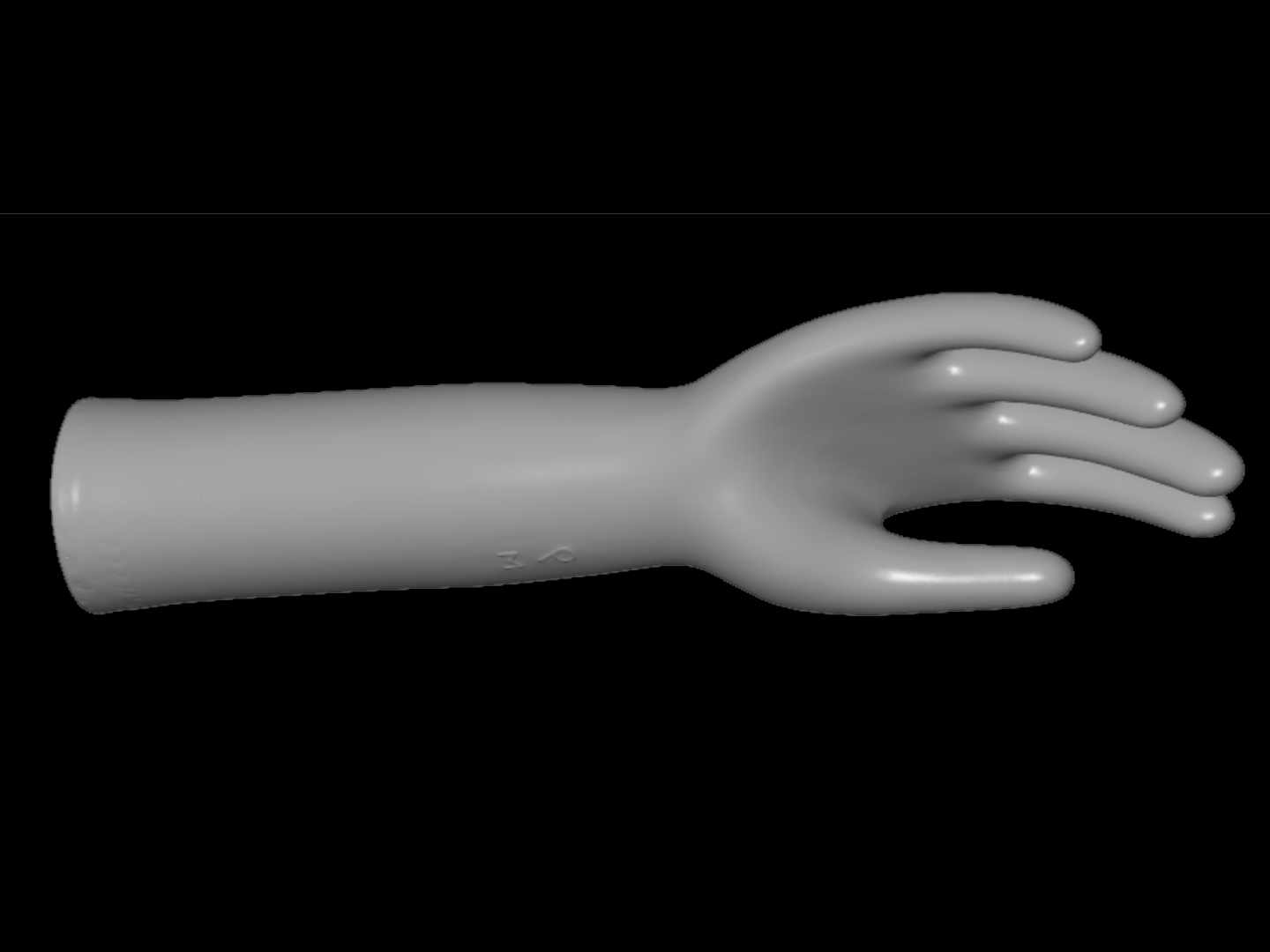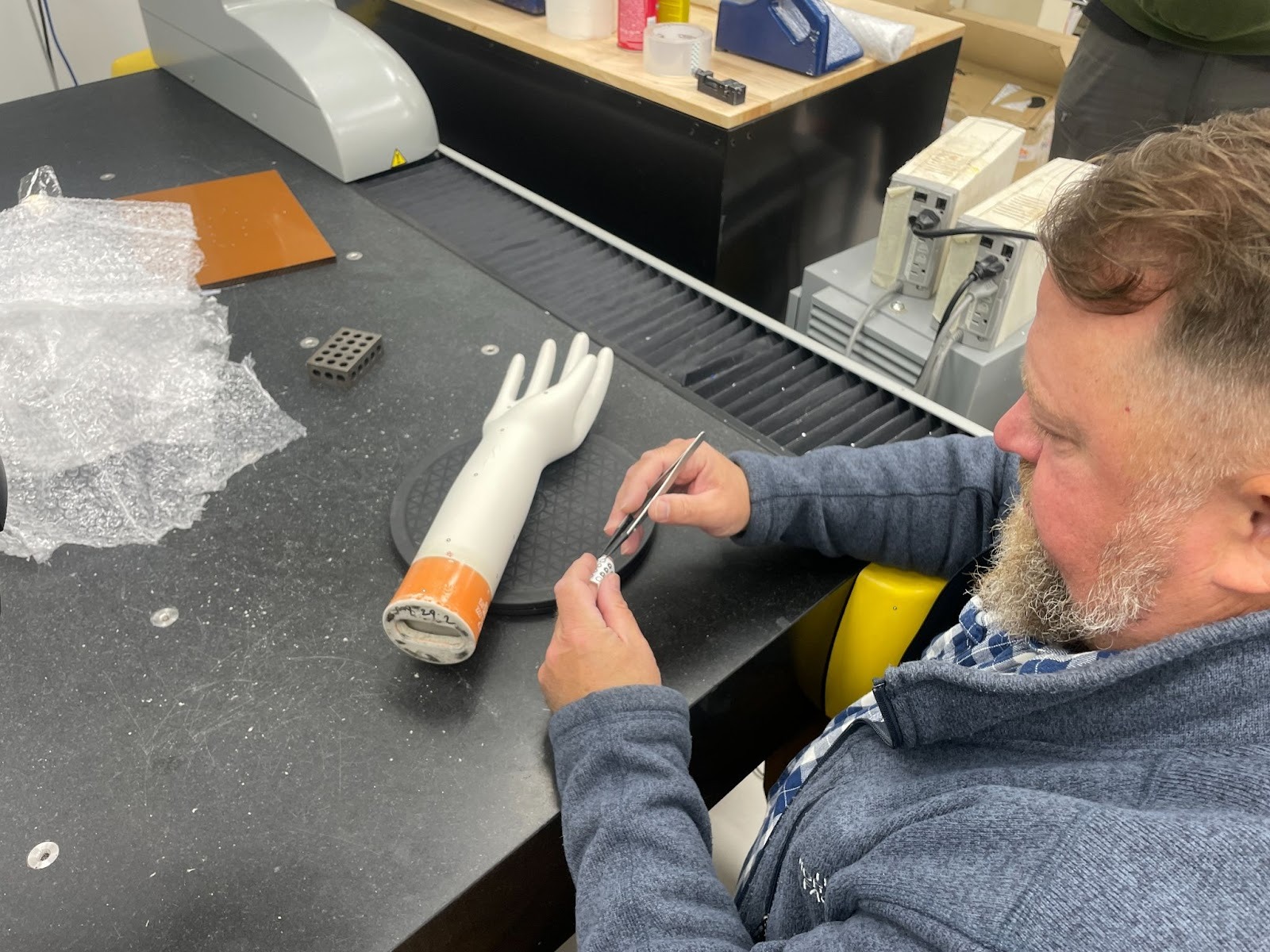
WEBINAR: Unlock the Power of Industrial CT Scanning
See Deeper. Solve Faster. Spend Smarter.
A 1/2 Hour That Could Reshape Your Inspection Strategy
Date: Wed June 18, 2025
Time: 11am Central Time
Location: Live Online Webinar

See Deeper. Solve Faster. Spend Smarter.
A 1/2 Hour That Could Reshape Your Inspection Strategy
Date: Wed June 18, 2025
Time: 11am Central Time
Location: Live Online Webinar
Learn how Nel PreTech helps medical device manufacturers strengthen sterilization validation and meet compliance requirements with blue-light scanning technology.

Surface area measurement is used in the calculation of cleaning validation protocols for medical devices. Knowing the device's surface area allows manufacturers to calculate sterilization or disinfection doses and model irradiation appropriately. Metrics like residual soil per cm2, sterilant contact modeling, and exposure dose modeling rely on accurate knowledge of surface geometry. Surface area data can also help manufacturers comply with ISO and FDA standards, including ISO 17664-1, which specifies requirements for the processing of critical or semi-critical medical devices intended for sterilization. 3D scanning is embedded in the surface area calculation process. Nel Pretech industrial CT scanning has long been a value-added service for internal and external sterilization validation. However, blue-light structured-light scanning is an accurate, cost-efficient alternative when only external surface measurements are needed. Blue-light scanning can capture millions of points per scan for precise, reliable surface measurements to enhance cleaning and regulatory validation processes.
Residual soil is the amount of organic, biological, or simulated matter, visible or non-visible, left on a device after the sterilization process or simulation. Post-processing calculation is expressed in terms of the total soil mass divided by the total surface area of the device. The medical device sterilization process is used for safety purposes at the point of use and to eliminate contamination during the manufacturing process. Having current surface area data can help demonstrate the efficacy of your validation process. If the processing of your medical devices requires ISO or FDA compliance, developing proper cleaning protocols requires surface area data to report residual soil on test devices.
A glove former is typically a ceramic mold in the shape of a hand used in high-volume medical glove manufacturing. Ceramic is used because of its durability in repeated exposure to chemicals and heat. The former determines the glove size, shape, thickness, and texture as it is dipped in latex or nitrile.
Blue-light scanning is a modernized version of white-light scanning. The blue light offers a narrower wavelength because it only represents one color. White light encompasses all colors and thus has a wider wavelength. The narrow blue light wavelength means better filtering of interference from the surrounding ambient light. Blue light scanners are not as easily influenced by temperature fluctuations, either.
Blue-light scanning is used for line-of-sight and is ideal for external geometries on most medical devices. At Nel PreTech Corporation, we use an ATOS Q 3D scanner with submillimeter accuracy.
ATOS Q Specs:
Limitations of blue-light scanning:
Blue-light structured-light scanning was used to determine the surface area of a ceramic glove former (or mold) used in the manufacturing process of medical gloves. The blue-light method incorporated a calibrated pattern of blue light projected onto the object. When the light washed over the surface of the glove former, it was distorted by the shape, curves, and edges. The distorted light was reflected to the scanner and was picked up by stereographic camera lenses. It took approximately 36 captures per part to build a complete 3D image. Nel PreTech used ATOS Professional scanning software to gather the data. The scans or frames were aligned and processed to form the seamless 3D model. The uncertainty of the 350 measurement volume was 30 microns (0.03mm).



If a manufacturer is missing legacy CAD files or has outdated manufacturing drawings, Nel PreTech uses 3D scanning to reconstruct tooling. We provide precise surface area values to ensure accurate dosage and soil applications. The speed of blue-light scanning and non-essential fixturing saves time and helps medical manufacturers get back to producing. 3D models and data comparison allow for the monitoring of tool wear or changes over time. With accurate measurements, medical device companies can make data-driven decisions and keep up with regulatory compliance.
3D data, such as the surface measurements blue-light scanning can provide, is modernizing medical manufacturing operations. Verifiable surface area measurements support cleaning, sterilization, maintenance, and regulatory compliance, and companies cannot risk anything less. Our customers trust our ISO/IEC 17025 A2LA-accredited methods. We encourage you to find out why.
Reach out to our expert engineers for a free consultation or to submit a request for quote.
Read our article on surface area calculation for medical devices using industrial CT scanning if you’d like to learn more about how we determine internal surface areas on complex parts.
Q: Why does surface area matter for cleaning validation?
A: All residual soil in the extractant from a test device is divided across the total device surface area tested to evaluate the soil per surface area (ex. μg of soil per cm² of surface area). STERIS AST
Q: Can blue-light scanning replace CT for formers/molds?
A: Yes, if only seeking external geometry. CT is still needed for internal geometries.
Q: How accurate are blue-light scans for surface area?
A: Accuracy varies widely between scanners. The ATOS Q that NPC uses quotes accuracy between a tenth of a thou and 2 thou. Blue light and triple scan technologies, along with advanced software, contribute to the high accuracy of these machines.

William is a long-time Project Engineer and Designer at Nel PreTech Corporation and one of the company’s most experienced CMM programmers. He earned his engineering degree at the University of Illinois Chicago. Years of precision metrology experience and CAD reconstruction make him a stand-out when it comes to tricky data or complicated programming. William's work is grounded in technical and practical design instincts. Outside the lab, you’ll find him playing music at a gig or running his own recording studio.

You'll find all the detailed service information you need in one brochure.
Download Brochure
Get a quote within 24-hours and keep your project on schedule.
Get a Quote
Our Nel PreTech engineers are ready to get started on your product challenges.
Ask an EngineerDownload the ultimate CT Scanning Buyer's Guide to improve understanding, time, and efficiency in your scanning needs. Over 50 Pages of useful data and case studies.
Download Now